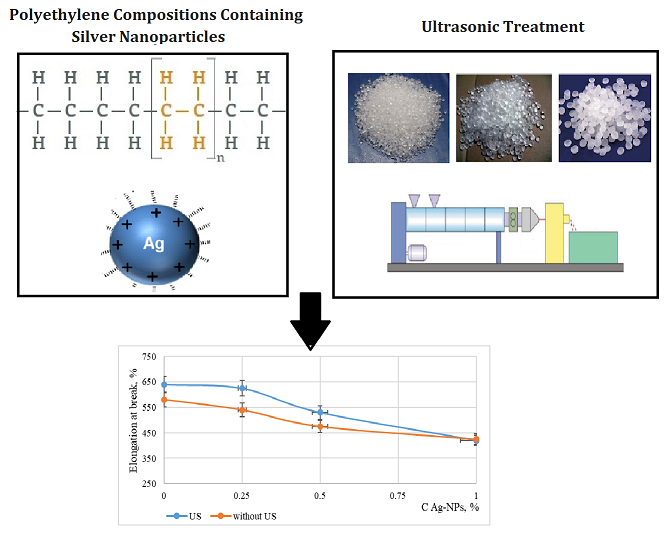Document Type : Original Research Article
Authors
- Kirsh Irina Anatolyevna 1
- Frolova Yulia Vladimirovna 2
- Beznaeva Olga Vladimirovna 1
- Bannikova Olga Anatolyevna 1
- Gubanova Marina Ivanovna 1
- Kondratova Tamara Alexandrovna 1
1 Moscow State University of Food Production, 125080 Moscow, Russia
2 Federal Research Center of Nutrition and Biotechnology, 109240, Moscow, Russia
Abstract
Ensuring the microbiological safety of food products is a problem currently at issue. The use of antimicrobial packaging materials is a way of solving the problem. Accordingly, the aim of this work was to create packaging materials based on polyethylene (PE) and silver nanoparticles (Ag-NPs) using the ultrasonic treatment of the melt to obtain antimicrobial materials that provide an extended shelf life of packaged food products. Materials based on PE were obtained with Ag-NPs concentrations of 0.5%, 1.0%, 2.0% and 5.0% with and without ultrasonic treatment of melts. Standard methods for studying rheological, physicomechanical, antimicrobial properties and sanitary-chemical indicators of materials were used in the article. It was found that ultrasonic treatment increases the melt flow and contributes to the production of materials with the uniform distribution of additives. The Ag-NPs content from 1.0% and higher in the contents of the material provides antimicrobial properties. The prolongation of the shelf life of the food product, stored in a material based on PE and Ag-NPs 2.0%, was established. In the study of oxygen and water vapour permeability of polymer compositions based on PE and Ag-NPs, it was found that the introduction of a filler increased vapour permeability by about 8-10%, compared with the control samples. The development of polymer composite materials (PCM) with antimicrobial properties and degradability was carried out.
Graphical Abstract
Keywords
- Polyethylene
- thermoplastic starch
- silver nanoparticles
- antimicrobial properties
- physico-chemical characteristics
- ultrasonic treatment
- biodegradation
Main Subjects


